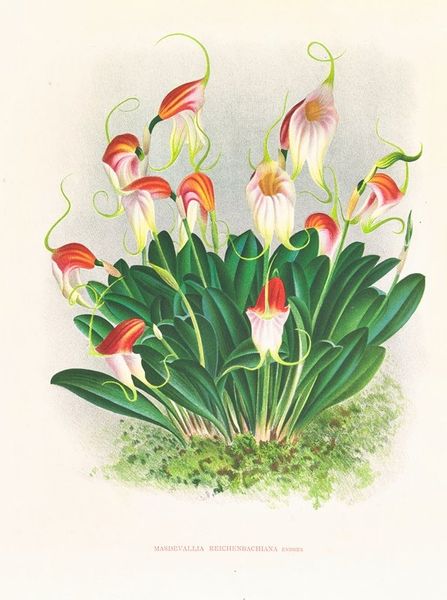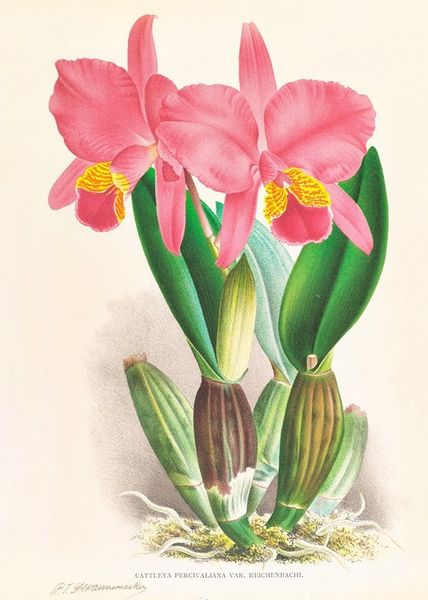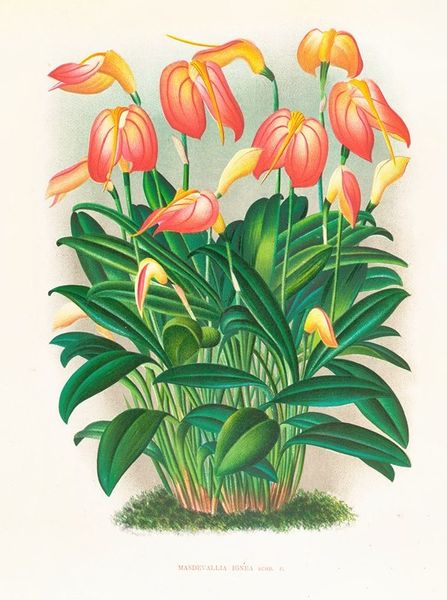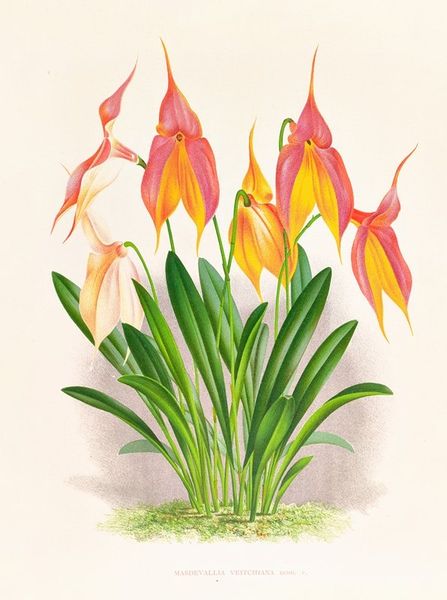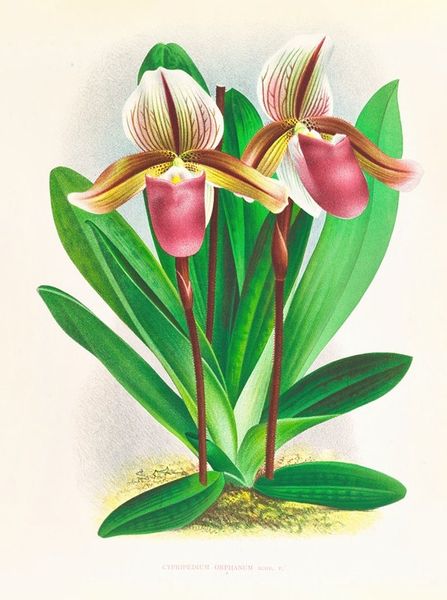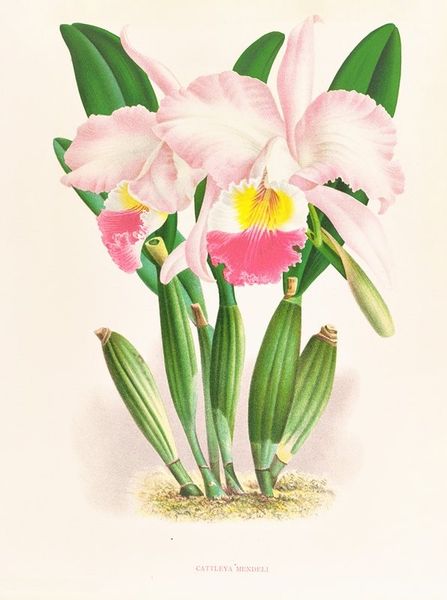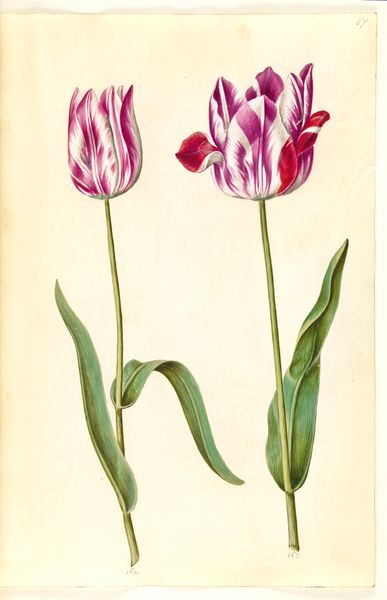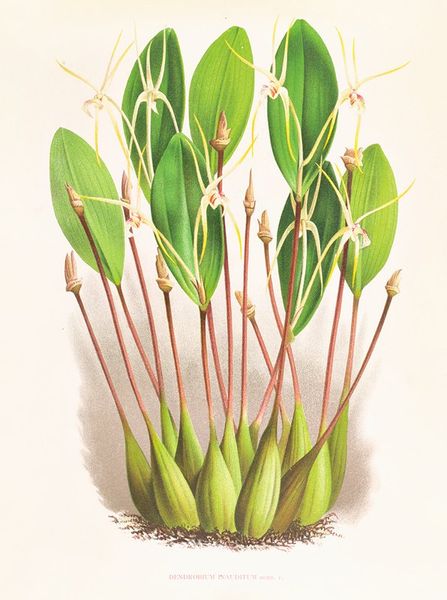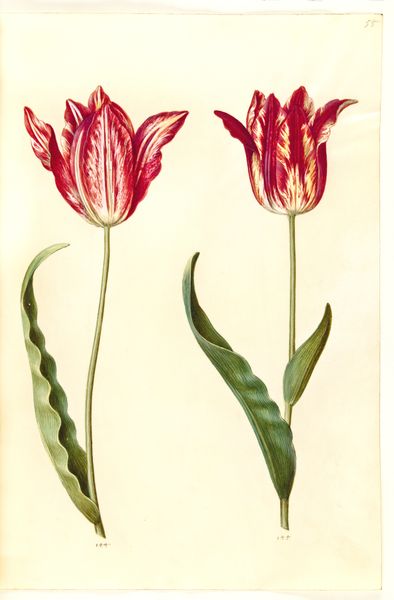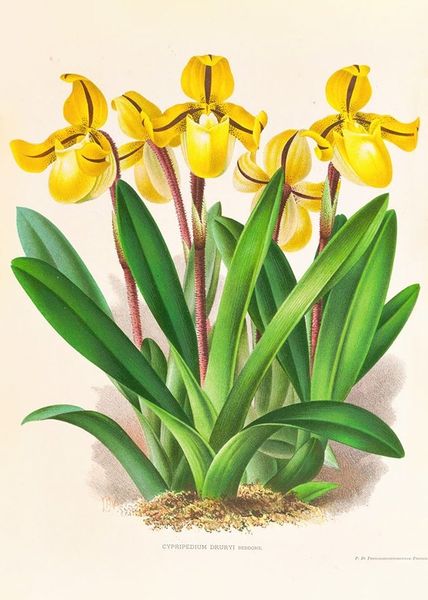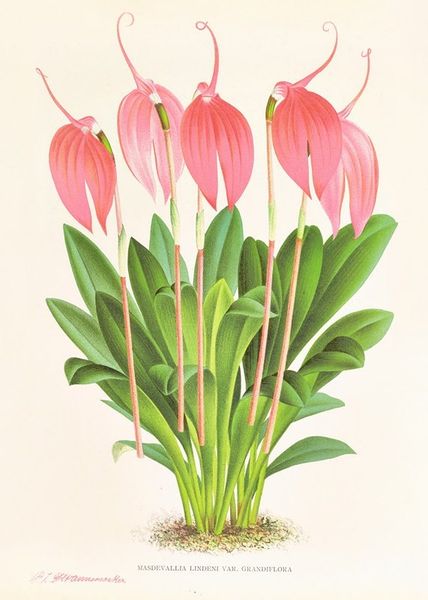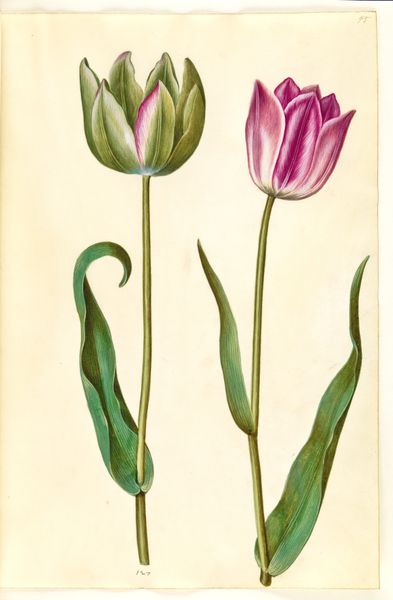
painting, watercolor
#
painting
#
watercolor
#
botanical art
Copyright: Public Domain: Artvee
Editor: This vibrant watercolor painting, *Anguloa Ruckeri var media* by Jean Jules Linden, likely created between 1885 and 1906, depicts a stunning orchid. What strikes me most is the contrast between the smooth petals and those intriguing, almost segmented, root structures. How do you interpret this work? Curator: Botanical illustrations such as this were vital documents during a period of intense colonial expansion. While appearing objective, they often played a key role in the appropriation of nature. Think about the power dynamics: Linden, a European botanist, depicts a South American orchid. Who was this image for, and what purpose did it serve? Editor: So, it’s not just a pretty flower portrait, but something more complex? Was it used for scientific purposes? Curator: Certainly. Botanical art was essential for identifying and classifying new species, often with commercial interests at heart. But it also reflects a Western gaze upon the natural world, transforming a living organism into a scientific specimen and, potentially, a commodity. The exacting detail, the scientific style– they lend an air of authority, masking a more complex story of resource extraction. Editor: That’s a perspective I hadn't considered. The beauty of the painting now has a layer of...complication. Does knowing the artist was European change how we should view the image today? Curator: Absolutely. Recognizing the colonial context doesn't diminish the skill of the artist but encourages a more critical reading. Whose stories are being told, and whose are being left out? Editor: I see. Thanks for showing me how even something as seemingly innocuous as a flower can have a deeper, politically charged history. Curator: Precisely. It highlights how art is always entangled with broader social and historical forces.
Comments
No comments
Be the first to comment and join the conversation on the ultimate creative platform.
